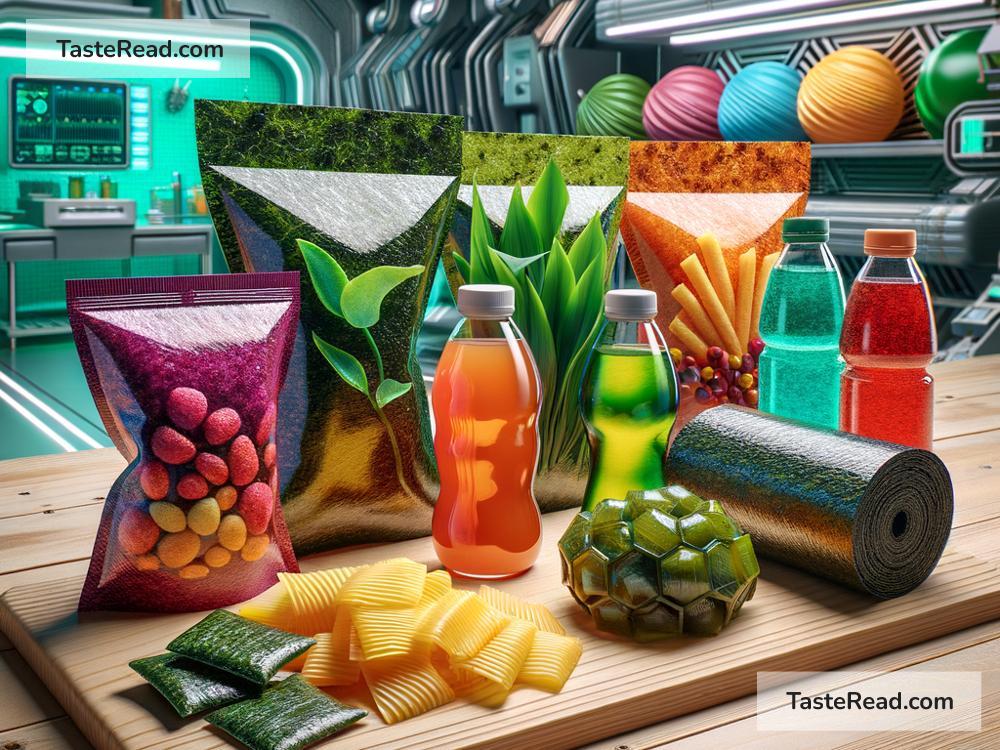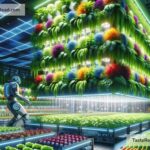The Future of Edible Packaging: A Tasty Solution for Our Planet
The world is facing a massive pollution problem, and much of it comes from packaging. Plastic wrappers, bottles, and bags are everywhere, harming the environment and filling up landfills. While recycling has helped reduce waste, it’s not enough. So, scientists and companies are coming up with a creative solution: edible packaging. This type of packaging can be eaten along with the food or drinks inside it, and it has the potential to change the way we package products in the future.
What Is Edible Packaging?
Edible packaging is made from materials that are safe to eat, like plant-based ingredients, proteins, seaweed, or even fruits. Imagine biting into an ice cream cone that’s wrapped in a tasty layer of edible chocolate, or drinking juice from a bottle made of jelly-like material that you can eat. Edible wrappers, cups, and containers are designed to hold food just like plastic does, but instead of throwing them away, you eat them instead.
The idea behind edible packaging is simple: if the packaging doesn’t end up in the trash, it won’t contribute to pollution. Plus, it’s a great way to reduce single-use plastics and help protect wildlife, oceans, and the planet.
Why Is Edible Packaging Important?
Plastic waste is one of the biggest environmental problems today. Every year, millions of tons of plastic are produced, and much of it is used for packaging. Most plastic isn’t biodegradable, which means it doesn’t break down naturally over time. Instead, it stays in the environment for hundreds of years, polluting the soil, water, and air.
Animals like marine turtles and birds often mistake plastic for food and get sick or even die after eating it. On top of that, tiny plastic particles, called microplastics, have made their way into our food and water supply, posing health risks for humans.
Edible packaging offers a smart alternative because it eliminates waste before it even starts. If people eat the packaging instead of throwing it away, there’s no trash to clean up. Plus, edible packaging is often made from natural and renewable resources, which makes it more eco-friendly than petroleum-based plastics.
Cool Examples of Edible Packaging
Edible packaging is still a new idea, but there are already exciting examples popping up around the world. Here are a few:
-
Seaweed Wraps: Some companies are creating food wrappers from seaweed, which is biodegradable and full of nutrients. Seaweed wraps can be used to hold sandwiches, snacks, or even burger patties. They add extra flavor to the food and don’t harm the environment.
-
Edible Water Pods: A London-based company invented water pods made from seaweed extract. These small bubbles hold water you can drink and eat at the same time. They’re great for outdoor events like marathons, where disposable plastic bottles are usually a big problem.
-
Fruit-Based Films: Scientists are developing thin films made from fruits like apples and bananas. These edible sheets can be used to wrap fresh produce, candies, or baked goods. They’re colorful, tasty, and naturally biodegradable.
-
Biscuits and Bowls: Edible cups and bowls made from biscuit-like materials are gaining attention in restaurants and cafes. You can order your soup or coffee served in an edible container, enjoy your food, and eat the container afterward—no waste left behind!
Challenges to Solve
While edible packaging is an exciting concept, it still faces some challenges. For example:
-
Durability: Edible packaging needs to be strong enough to hold food or liquids without breaking apart easily. Scientists are working to make it as durable as plastic but still safe to eat.
-
Food Safety: Edible packaging has to stay fresh and clean until it’s consumed. If it spoils or becomes contaminated, it could create health risks. Manufacturers are exploring ways to preserve edible packaging to keep it safe.
-
Cost: Edible packaging is still more expensive to produce than traditional plastic. As the technology improves and demand grows, costs are expected to come down, making it more affordable for everyone.
-
Acceptance: Not everyone is ready to eat their packaging! It may take time for people to get used to the idea of edible wrappers and containers. Education and marketing will play a big role in helping people understand the benefits.
What Does the Future Look Like?
The future of edible packaging is bright. As scientists and companies continue to innovate, edible packaging could become more common in stores, restaurants, and homes. Governments around the world are already pushing for bans on single-use plastics, which will create more demand for eco-friendly alternatives like edible packaging.
In addition to reducing waste, edible packaging could help fight world hunger. Some forms of edible packaging can be made with nutritious ingredients, offering an extra source of food in areas where resources are limited.
Eventually, shopping might look very different. Instead of carrying groceries wrapped in plastic, you could buy products wrapped in edible packaging, or even packaging that dissolves in water. This exciting trend could make sustainability tastier and more fun for everyone.
Final Thoughts
Edible packaging is more than just a cool idea—it’s a practical solution to some of the planet’s biggest challenges. By using natural, biodegradable materials, edible packaging can reduce pollution, protect wildlife, and make our lives more sustainable. While there are still hurdles to overcome, the future looks promising. In the years ahead, edible packaging might become a normal part of our everyday lives, offering simple and delicious ways to care for the environment. Who knows? Someday soon, we may enjoy eating our snacks and their wrappers, guilt-free!


